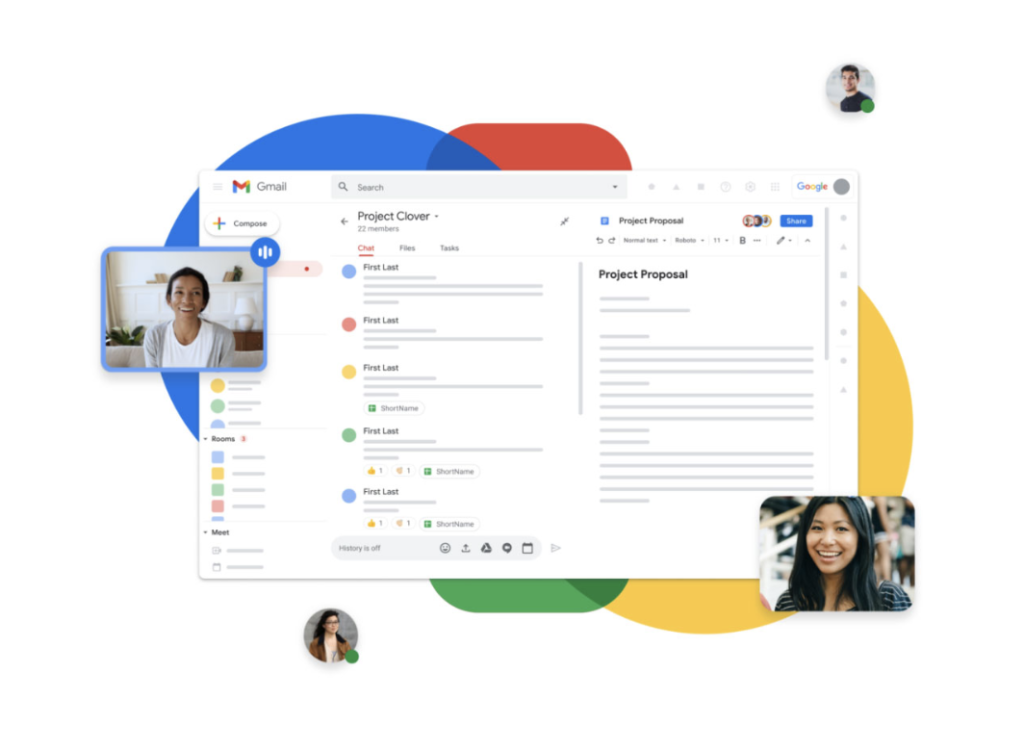Nonprofit Technology & Fundraising Blog
Subscribe to our mailing list

May 4, 2023 | Fundraising Operations
Did you know that Google offers free tools to help nonprofits improve operational efficiency? In fact, there is a wide range of free online resources available to nonprofits, providing a perfect opportunity for new and small nonprofits to get their feet off the ground.
As nonprofit organizations grow and expand their budgets, some keep using the free tools that they know and love, some supplement them with more robust solutions that save time for their staff, and some seek to automate every routine fundraising operation they can to remain laser-focused on their mission.
Whatever your organization chooses, may you never lose sight of your creativity and never stop loving what you do. To help you determine the best fit for your nonprofit budget and the bandwidth of your fundraising staff, we’ve listed five free online tools that are often celebrated within the nonprofit industry.
For nonprofit operational efficiency, the benefit of using Google Workspace is two-fold; by sharing one unified, cloud-based workspace, organizations can 1) promote alignment in their internal communications between fundraisers, board members, and volunteers, and 2) make more informed decisions regarding their external communications with donors and prospects. Streamlining these processes leaves more time to stay focused on the mission.

“The Google for Nonprofit tools not only help keep the Girl Scouts of Japan programs organized and efficient, but also help visualize their important work to encourage and empower girls and young women.”
Givecloud empowers nonprofits by enhancing the way their donors are able to give and engage through innovative fundraising solutions. Their fundraising event platform has a free package available that includes ticketing, event registration and check-in, sponsorship packaging, and even post-event reporting.
As your organization grows, you will have the option to use fundraising software that integrates with Givecloud for major initiatives, like hosting a virtual event or building a new website. Some packages even allow donors to access their own payment information, including tax receipts and giving history, and edit payment details.
Don’t miss Givecloud at the virtual DonorPerfect Community Conference: REFRESH! In their free session, they will be sharing actionable steps to steadily increase your donor engagement. Learn more and register >>
Canva is an extremely intuitive resource for beginners to create free marketing materials such as social media posts, email newsletters, ads, website graphics, and more. With thousands of free templates to choose from, you can create any professional, branded, on-theme material you need. For printed materials like postcards, tickets, event programs, and banners, Canva allows you to create and save your design for free, with optional printing and shipping available in a few clicks.
Design expert Abby Guido believes Canva can even help nonprofits develop their brand standards. For example, let’s say your nonprofit is building a website homepage that incorporates photos taken on different devices by different people. You can use Canva to bring consistency to each image with colorization, like color overlays and black-and-white effects, she explains. Keeping every font, color palette, and image consistent across your marketing materials helps to establish familiarity and trust with your nonprofit brand.
There’s no need to hire a designer to make your nonprofit branding stand out. We called on design expert Abby Guido to help us create a free guide full of practical, DIY design tips specifically for nonprofits. Get your copy of Design Tips for Nonprofits >>
Facebook and Twitter provide a free space for you to engage with donor prospects and learn about how they give. By connecting with your supporters and volunteers, you have an automatic “in” with their friends and family members who might be passionate about the same things. On Facebook, you can join groups that relate to your mission to create posts and ask questions. On Twitter, you can include trending hashtags in your posts to get the attention of like-minded individuals.
These tools are a great substitute for prospect research solutions that come with a subscription cost. However, if you’re looking for a tool that has the capacity to do things like find major donors based on philanthropic history or income level, or update constituent addresses in batches to optimize your mailing costs, a robust prospect research tool could be well worth the financial investment.
Sick of wondering what to post or tweet about? We invited Julia Campbell, a nonprofit digital consultant, speaker, and author, to share tips and exercises to grow your organization’s social media presence. Get your copy of the Nonprofit Social Media Content Planner >>
On direct mail pieces, nonprofits can include a QR code that sends donors to their online form or crowdfunding page, saving them the trouble of writing a paper check, finding cash to mail with a reply envelope, or calling to read their card information over the phone.
In addition to reducing payment friction and security concerns, QR codes are an easy way to save on printing and mailing costs. Not only are they free to generate online, but there’s also no need for multiple pages or a response device – readers can simply scan the code to access your full message, including photos, videos, and giving options.
Don’t waste those beautiful mailers on the wrong address! With DP Address Updater, you can set DonorPerfect to automatically update donor addresses while you sleep. Learn more about DP Address Updater >>
You might notice that some of the operations mentioned above can be performed or automated by a nonprofit CRM (customer relationship management system), like scheduling communications and planning events. Once an organization is able to justify a software subscription to streamline its daily fundraising operations, free tools like Canva still remain useful, allowing staff to excel in specialized areas that are often outsourced.
However, when implementing free tools to cut costs, it’s worth considering how much your nonprofit will be spending in terms of your staff’s time. Free fundraising tools can be a beacon of hope for growing nonprofits as they get comfortable with their budget, but they can become even more valuable when used in conjunction with time-saving solutions that do come with some expense.
According to PayScale, the average hourly rate for the nonprofit industry is about $20 per hour. Daily operational tasks that are done manually – like updating constituent information and tracking communications with a free spreadsheet tool – could end up costing your organization hundreds of dollars in payroll per week. If a robust fundraising solution is able to shave off a substantial amount of employee hours per month by automating those functions, it can pay for itself while steadily increasing your revenue. For example, nonprofits typically raise 20% more revenue in their first year using DonorPerfect as their CRM.
At the end of the day, only you and your team know which fundraising tools will work best with your annual budget and staff bandwidth. At DonorPerfect, we encourage nonprofits to lean into automated tools so they can spend more time exploring new techniques – like sharing videos on social media or getting creative in Canva – and have some actual fun while fundraising!
Follow us on social!